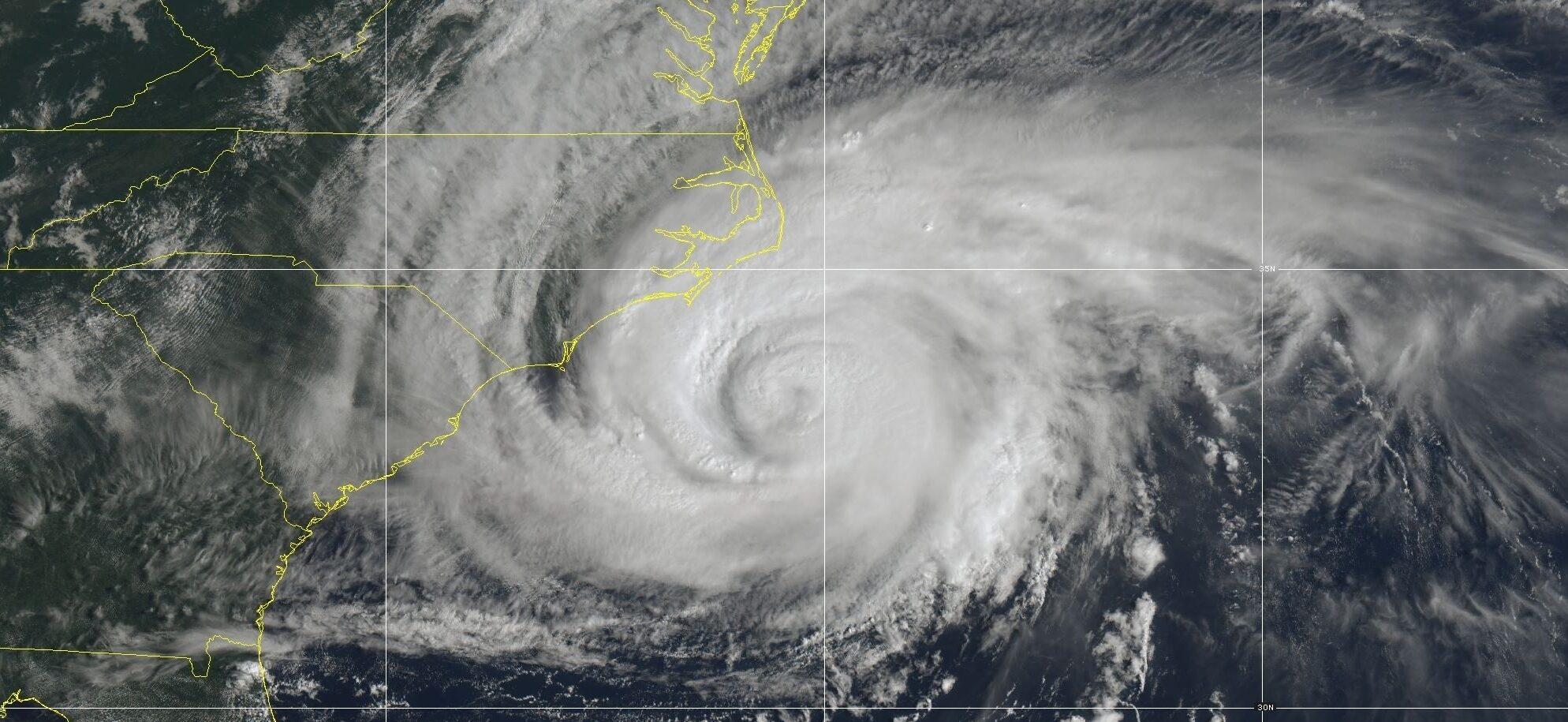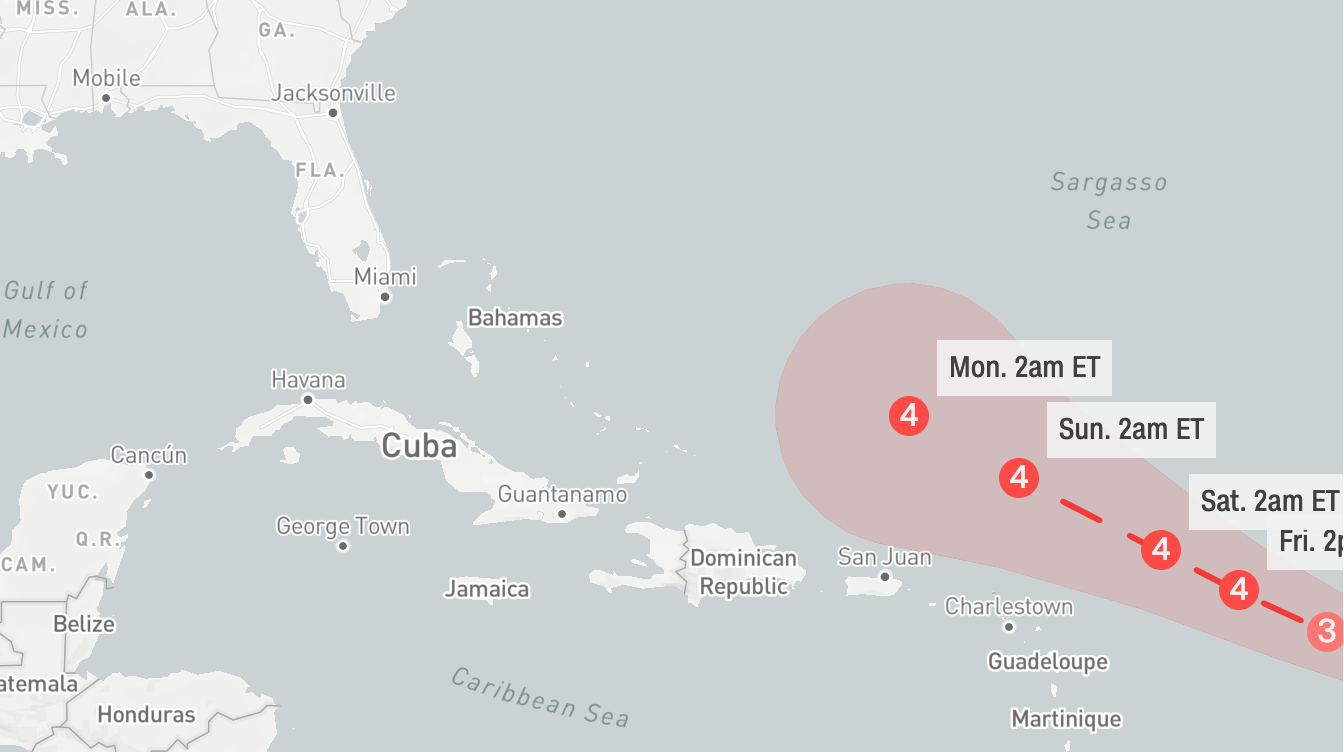When It Rains, It Pours: East Coast Residents Issued Tropical Storm Warning Ahead Of Heavy Weekend Rain
By Afouda Bamidele on September 22, 2023 at 1:15 AM EDT

The next few days shall be filled with heavy rain for parts of the densely populated East Coast!
A tropical storm warning was issued for those along coastal North Carolina to Delaware as an approaching storm could develop into a tropical cyclone. The weather update came via the National Hurricane Center on Thursday, September 21.
Residents in the storm's range were advised to buckle up and prepare for its arrival. The threat was expected to appear between Friday and Saturday, bringing with it dangers of high winds and flooding alongside the aftermaths from distant Hurricane Nigel.
How Brewing Tropical Storm Forces East Coast Residents To Cancel Their Weekend Plans
According to AP News, the National Hurricane Center revealed the formation of "Potential Tropical Cyclone Sixteen" following its location at about 345 miles (550 kilometers) southeast of Charleston, South Carolina. A 5 p.m. advisory from the center stated the storm was heading north at 8 mph (13 kph).
Looks like a tropical storm or hurricane named Ophelia is going to hit North Carolina.
Watching Lumberton N.C. which is very vulnerable subjected to flooding.
Already labeled North Carolina's most dangerous city cause of past hurricane damage & economy. #Orphelia pic.twitter.com/1Kvl4rlfPb— JLR© (@JLRINVESTIGATES) September 21, 2023
A potential tropical cyclone, as defined by the hurricane center, is a disturbance that appeared within 48 hours while carrying the threat of a tropical storm or hurricane conditions. The brewing storm could arrive on the North Carolina coast around Friday night or early Saturday.
Ahead of its speculated arrival, meteorologist Maria Torres, a public affairs officer with the Miami-based center, advised residents along the Atlantic coast to gather supplies and prepare for the storm in the next 24 to 48 hours. Addressing the storm's severity, Torres said:
“This will bring some tropical storm force winds and storm surge along with the high winds to the East Coast through the weekend, mainly from the Southeast to the Mid-Atlantic states.”
Areas the potential tropical cyclone was expected to hit began from Cape Fear, North Carolina, to Fenwick Island, Delaware. The Chesapeake Bay south of North Beach, Tidal Potomac south of Cobb Island, and the Albemarle and Pamlico Sounds were also issued tropical storm warnings.
Officials from the Virginia emergency management stressed that residents should prepare for heavy rain, high winds, and flooding in the next few days. The dangers did not end there as North Carolina Emergency Management revealed the state's coast would suffer from large swells caused by distant Hurricane Nigel.
NEW: Potential Tropical System #16 designated in Atlantic. NHC preliminary forecast has a 60 mph tropical storm pushing into North Carolina this weekend, especially Saturday evening. Tropical Storm Warning in effect with also the potential for 2 - 4 feet of surge. Next name is… pic.twitter.com/H0P05eMu0d
— Matt Devitt (@MattDevittWINK) September 21, 2023
Florida & Other East Coast States Were Warned Of The 'Intensifying' Tropical Storm Lee
Weeks before news of the Potential Tropical Cyclone Sixteen arrived, Florida and other East Coast states were preparing to be hit by Tropical Storm Lee. According to the National Hurricane Center, the threat could become a hurricane as its strength had increased with its approach.
“Lee is not far from hurricane strength, and it likely will achieve that status later today,” the center's 5 a.m. update on September 6 read. “While it is too soon to determine the location and magnitude of these possible impacts, interests in this area should monitor the progress of Lee and further updates to the forecast.”
Reports noted that Tropical Storm Lee was expected to hit a maximum sustained winds of 65 mph and was about 1,300 miles east-southeast of the northern Leeward Islands. A storm's rapid intensification like Lee's occurred "when a storm’s winds strengthen quickly over a short amount of time."

Scientists defined it "as a wind speed increase of at least 35 mph in 24 hours or less – a phenomenon aided by warm ocean waters." At the time of the report, sources stressed that if the hurricane remained at sea, "dangerous surf and rip currents could once again threaten the East Coast."